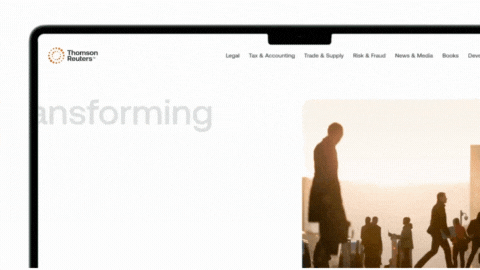Requirements, regulations, violations, restrictions and more resources for attorneys
Securities law · Regulation S
Generally, whenever there is a sale or offer of securities within the US, there are certain requirements under Section 5 of the Securities Act and the state-specific blue sky laws for registration.
However, if the sale or offer is outside the US, then as per Regulation S, which was adopted in 1990, the registration requirement under Section 5 is exempt. Regulation S exemption encompasses various financial instruments, including debt securities, equity securities, and convertible notes, as part of a capital-raising transaction.
Regulation S comes into play in the following circumstances:
- Whenever there is a US company issuing securities only to foreign investors or
- When a US investor enters into a foreign market to buy foreign securities.
Regulation S of the US Securities Act of 1933. It provides a safe harbour from the registration requirements of that Act for offers and sales of securities outside the US where certain conditions are fulfilled. It imposes different conditions depending on the type of issuer, that is, US or non-US, and on which of three categories the securities being offered fall into.
Practical Law Glossary
Jump to ↓

CoCounsel
Bringing together AI, trusted content, and expert insights for securities and transactions
Request free demo ↗Requirements
The main goal of Regulation S under the Securities Act is to make it easier to raise money in other countries. It also makes sure that unregistered securities do not illegally enter the US financial system.
Therefore, there are certain requirements that issuers must meet, and market participants must rely on the safe harbor offered by Regulation S.
Therefore, there are certain requirements that issuers must meet, and market participants must rely on the safe harbor offered by Regulation S.
The following are the two essential requirements:
Offshore transaction
The transaction that is taking place, whether it is an offer or sale of the securities, must occur in an offshore transaction. As per Section 230.902 (h) under definitions, an offshore transaction is a transaction where:
- The offer is not made to a person who is in the United States and
- Either of the following:
- The buyer is outside of the United States or
- The offeror, reasonably in good faith, believes that the buyer is outside of the United States or
- The transaction is executed on an established foreign securities exchange.
This means that the buyer should be physically located outside the United States at the time of the offer and the sale.
In Securities and Exchange Commission v. Softpoint, Inc, the court revealed that Softpoint had pre-planned its foreign stock sales as part of a scheme to facilitate unregistered domestic sales. Softpoint did not voluntarily conduct the overseas distributions. Instead, it created a deceptive facade to bypass US legal requirements.
The court emphasized that Regulation S protects only genuine offshore transactions, and Softpoint’s stock liquidation did not meet this standard. It also clarified that parties cannot use Regulation S to disguise domestic security offerings as foreign distributions to evade the Securities Act’s registration mandate.
No directed selling efforts in US
As per Section 230.902 (c), directed selling efforts are defined as any activity which may be undertaken for or which could reasonably be expected to have an effect on the conditioning of the financial market in the United States for any of the securities that has been offered in reliance on the Regulation S.
As a part of the requirement for the exemption neither the issuer nor any involved party must be engaged in any kind of directed selling efforts in the United States.
In Geiger v. SEC, it was noted that “the Regulation S exemption does not apply to transactions that, though in technical compliance, are designed to evade the registration requirement.”
This means that even if the issuer is following every technical requirement that is mentioned under Regulation S, they can still lose the exemption if the intent or the structure behind was just to bypass the US securities laws.
Violations
The following are violations and abuses of Regulation S.
Avoidance of registration
Regulation S is used as a loophole to evade SEC registration requirements, which in turn violates Section 5 of the Securities Act. In this context, the issuer constructs transactions with offshore investors intending to sell shares back into the US market immediately.
Improper use of offshore entities by US investors
US investors participate illegally by setting up offshore shell companies to purchase discounted shares, which violates the residency exclusion clause of Regulation S.
Use by distressed or low-quality companies to raise capital
Companies that are unable to raise funds through traditional means often use Regulation S to issue shares offshore, typically at a steep discount. This allows them to generate cash flow, even if it dilutes existing shareholder value and prolongs their distressed existence.
Short selling and hedging against the US market
Short selling occurs when overseas purchasers buy Regulation S shares at a deep discount, then they immediately short-sell the same stock on the US exchange market. Foreign investors exploit the short 40-day holding period by short-selling shares in the US and delivering Regulation S shares after the restriction period.
Restrictions
In addition to Regulation S requirements, issuers must meet specific conditions based on their nature, the risk of securities flowing back into the US, and the type of security offered. These conditions act as safeguards to prevent unregistered securities from re-entering the US market.
These restrictions are divided into three categories.
Category 1
This category includes securities that have the lowest risk of re-entering the US market. Therefore, they are subject to fewer restrictions that include:
- Securities issued by a foreign issuer with no substantial US market interest (SUSMI) in the offered class.
- Overseas directed offerings that are made only in one non-U.S. country under its local laws and customs.
- Securities that are backed by the full faith and credit of a foreign government.
- Securities issued to employees abroad under a foreign employee benefit plan.
They are usually the securities of foreign issuers with minimal US connections or are offered in markets that are mostly foreign. The only requirements for these securities are that the transaction must be offshore and that there should be no directed selling efforts in the US.
Category 2
Category 2 applies to moderate-risk transactions and includes:
- Equity securities of reporting foreign issuers
- Debt securities of reporting US or foreign issuers
- Debt securities of non-reporting foreign issuers
They are subject to the Distribution Compliance Period — in addition to the general conditions — which begins on the date of the first sale and typically lasts 40 days for debt securities and six months for equity shares of reporting issuers.
Restrictions on the Category 2 safe harbor include:
- Any offer on sale before the expiration of the distribution compliance period must not be made to any US person or for the account or benefit of that US person.
- Each distributor selling to another distributor, a dealer, or anyone else during the distribution period must send a confirmation or notice stating that the purchaser is subject to certain resale restrictions.
- The securities carry stamps known as restrictive legends, which reflect their restricted status.
Category 3
This is the residual safe harbor for all transactions that are not eligible under Categories 1 and 2.
It includes the following:
- Debts or equity offerings by non-reporting US issuers
- Equity offerings by US reporting issuers and
- Equity offerings by non-reporting foreign issuers with SUSMI
Transactions in this category are subject to a distribution compliance period of one year for equity securities of non-reporting issuers, six months for equity securities of reporting issuers, and 40 days for debt securities.
In addition to the general restrictions, the following restrictions apply during the distribution compliance period and beyond:
- No sales to US persons during the compliance period
- Buyers must certify that they are not US persons. This is done through investor certification of non-US person status
- Buyers must agree not to resell except under the Regulation S
- Along with this, the securities must carry restrictive legends
Resale Restrictions
After the distribution compliance period ends, sellers cannot automatically resell securities in the United States. They must comply with US securities laws, particularly Section 5 of the Securities Act, unless an exemption applies, such as Rule 144 or Rule 144A.
Rule 905 of Regulation S clearly states that equity securities of domestic issuers, classified as restricted under Rule 144, remain restricted even if acquired through a resale under Regulation S.
This means sellers cannot freely resell these securities in US public markets just because the distribution compliance period has ended. To resell the securities in the US markets, the purchaser must either:
- Register the resale under the Securities Act, or
- Resell in compliance with any other exemption, if applicable, or
- Conduct another Regulation S-compliant transaction offshore
Resources from Practical Law attorney-editors
Get access to curated resources maintained by our attorney-editors below when you sign up for a free trial.
Practice Notes
- Offshore Debt Offerings: US Tax Restrictions on Issuing Bearer Debt
- Raising Capital Under Rule 144A and Regulation S: The Lawyer’s Role
- Registration Rights Agreements for Rule 144A and Regulation S Offerings: Understanding the Terms
- Resales Under Rule 144A and Section “4(1½)”
Standard Documents
Standard Clauses
- Board Resolutions: Rule 144A/Regulation S Securities
- Legends for Rule 144A/Regulation S Global Security
- Pricing Committee Resolutions: Rule 144A/Regulation S Securities
- Standard Regulation S Representations and Covenants for Purchase Agreement
- Standard Rule 144A Representations and Covenants for Purchase Agreement

AI news and insights
Industry-leading insights, updates, and all things AI in the legal profession
Join community ↗








